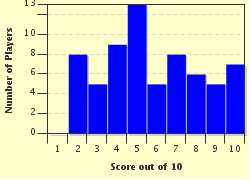Quiz Answer Key and Fun Facts
1. Istanbul has had many names in its millennia-long history. When the city was first founded over 3,000 years ago, what was its name?
2. Which ancient Roman Emperor sacked and then rebuilt Byzantium in AD 196? He also invaded what is now Scotland and expanded the Roman Empire to the Tigris River.
3. The Byzantine Emperor Justinian, who ruled from 527-565, is often considered the greatest leaders of the empire. One of his accomplishments was building the Hagia Sophia, still one of Istanbul's most famous attractions. Which of the following is NOT something the Hagia Sophia has been during its long history?
4. What is the name of the famous building, seen in the picture in scale model, that was built in 1453 under the orders of Sultan Mehmed II and was to be the seat of Ottoman rule for 389 years?
5. Who is the famous Ottoman architect and engineer who designed the Suleiman Mosque in Constantinople and is known for helping Suleiman the Magnificent accomplish his goal of expanding the arts within the Ottoman Empire?
6. Built in 1584 for Nurbanu Sultan, wife of Selim II, Cemberlitas Hamami is a famous example of what kind of structure, relatively common in modern Istanbul?
7. During the Constantinople Massacre of 1821, the Ottomans attacked and massacred which group of the population?
8. The hanging of twenty Hunchakian activists in 1915 is considered part of which larger event, a taboo subject in Turkey to this day?
9. What is the name of the plaza in Istanbul that was the site of many political protests including the 1969 Bloody Sunday and a massacre in 1978?
10. The Gezi Park protesters fighting for many rights including freedom of speech and assembly marched in 2014 in Taksim Square are said to have been inspired by which American movement?
Source: Author
Joepetz
This quiz was reviewed by FunTrivia editor
bloomsby before going online.
Any errors found in FunTrivia content are routinely corrected through our feedback system.
